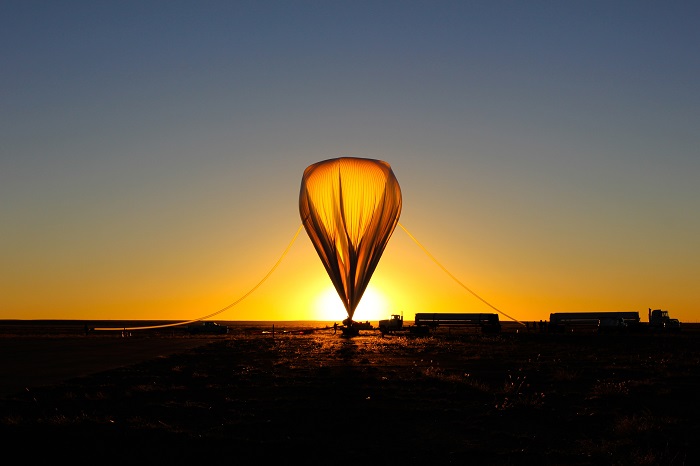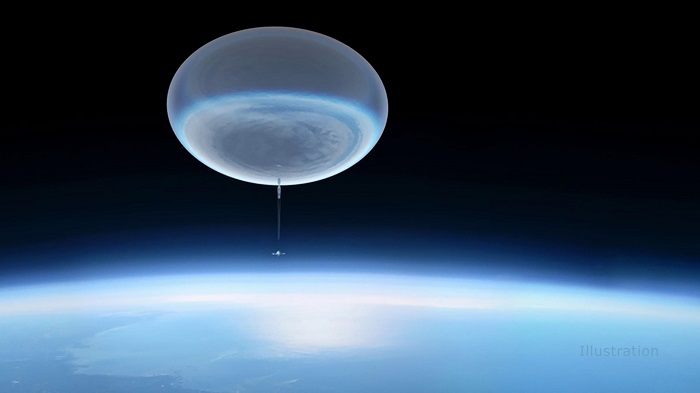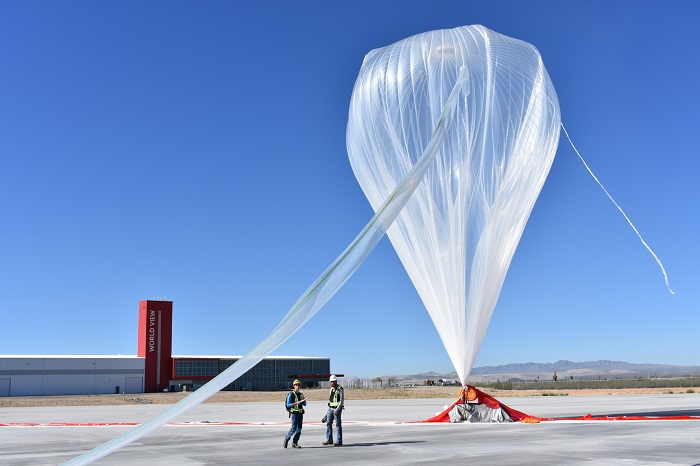ISABEL RUBIO ARROYO | Tungsteno
Flying high in the skies and spying on the enemy from above without being detected is the dream of many military organisations. While airplanes and satellites are an expensive and limited alternative for surveillance missions, the US Department of Defense is experimenting with high-altitude balloons. These aircraft have been a very useful tool for science and technological innovation, both in the study of the cosmos and in weather research and forecasting. Here we analyse the viability of this old technology compared to the most sophisticated drones and latest-generation aircraft.
The dream of surveillance from above
Among the main disadvantages of drones and airplanes are the time limitations to survey an area and the cost. "Even with something like the Global Hawk (the US main strategic reconnaissance drone), you only get about 20 hours over the area of interest, and less than that if you have to travel a significant distance to get there," says Justin Bronk, an analyst for the UK defence thinktank RUSI, in Popular Mechanics magazine.
While multiple powers are looking for ways to monitor an area for weeks at a time at an affordable price, some have identified stratospheric balloons (which fly between 15 and 50 kilometres above sea level) as a potential solution. One such example is World View Enterprises, an Arizona-based company that develops technology for the Pentagon and NASA, as well as offering space tourism services. A couple of years ago, the company managed to keep one of its balloons aloft for 32 days. Its creators claim that such balloons, which have a volume of up to 800,000 cubic feet (22,650 cubic metres), could be used to monitor natural disasters or for military reconnaissance missions.
The low cost of high-altitude balloons and their ability to operate for days at a time may make them an attractive alternative over other aircraft. Credit: NASA Wallops.
Technology to detect supersonic missiles
The COLD STAR (COvert Long Dwell STratospifer ARchitecture) programme of the US Department of Defense aims to spy on its enemies with stratospheric balloons equipped with high-fidelity sensors, autonomous navigation systems and artificial intelligence. Such aircraft, which appear to have already been tested, could be used to detect hypersonic missiles—which travel at least five times faster than the speed of sound. In addition, the gondola (the basket hanging from the balloon) can carry everything from daylight and thermal cameras to radar, radio frequency sensors, solar panels or swarms of drones to carry out more surveillance missions.
The balloons in this programme are designed to remain completely transparent to enemy radar. In theory, their gondolas could also go unnoticed by being designed without straight lines and sharp corners that produce reflections. But in reality, no balloon can ever be completely invisible, as the Popular Mechanics website points out: "Even at 80,000 feet [about 24 kilometres] such a large object is visible as a bright blob if caught by sunlight at the right angle." Still, Bronk stresses that many older radar systems automatically identify objects flying slowly overhead as birds. In the face of antiquated radar technology, these balloons could pass undetected.
Another US Department of Defense programme, Trippwire, is developing technology to detect such balloons and shoot them down. Knocking them out seems at first glance more complicated than shooting down a plane or drone, as the gondola lacks a pressurised cockpit, fuel tank, munitions or high-speed turbines. But, according to Bronk, while the attack "would not create an explosive event as a hit on an aircraft might, there’s still a good chance of taking it out of commission." The US Senate Committee on Armed Services believes that further testing and evaluation are still needed before the technologies in this project can transition to the military services.

The US Department of Defense intends to use autonomous stratospheric balloons with high-fidelity sensors and artificial intelligence in surveillance missions. Credit: NASA.
Systems that measure wind patterns
The idea of using balloons for enemy surveillance is not new. The US did it decades ago. Project Genetrix was a US Air Force project that involved launching balloons over China, Eastern Europe and the Soviet Union to photograph secret infrastructure. Of the more than 500 balloons launched, 54 were recovered, but only 31 took useful images. This was because the aircraft could only move randomly in the wind.
To solve this problem, it was necessary to understand how the stratosphere works. In this layer of the atmosphere, wind patterns remain constant at a given altitude. Therefore, given the right weather information, it is possible to make the balloon go in any direction. The goal of Google's Project Loon initiative, which began to take shape in 2011, was to develop high-altitude balloons that, powered by the winds in the stratosphere, could provide Internet access to any corner of the globe. Some of these aircraft were used to provide emergency coverage to Puerto Rico after Hurricane Maria.
In recent years, some companies have improved wind prediction algorithms to enable these balloons to fly at the right altitude and in the right direction. Meanwhile, the US Defense Advanced Research Projects Agency (DARPA) has developed a laser sensor for stratospheric balloons to measure wind speed and direction in real time and use this information to stay in place. Winds blow in different directions at different altitudes. "By flying higher, we hope to take advantage of a larger range of winds," says Alex Walan, the project manager in charge of designing this laser sensor.

NASA plans to study the cosmos from a stratospheric balloon. Credit: NASA Goddard Space Flight Center Conceptual Imaging Laboratory / Michael Lentz.
All these advances aim to make stratospheric balloons a more affordable and viable alternative to other machines. Whether the tests by the US Department of Defense are successful and these aircraft eventually become a key military weapon for monitoring strategic locations remains to be seen. In the meantime, these balloons are being used today for all kinds of measurements. NASA has already used them to understand the connection between the Sun and the Earth and now plans to transport a 2.5-metre telescope to the stratosphere in a balloon. The race to conquer the heights still has a long way to go.
· — —
Tungsteno is a journalism laboratory to scan the essence of innovation. Devised by Materia Publicaciones Científicas for Sacyr’s blog.
